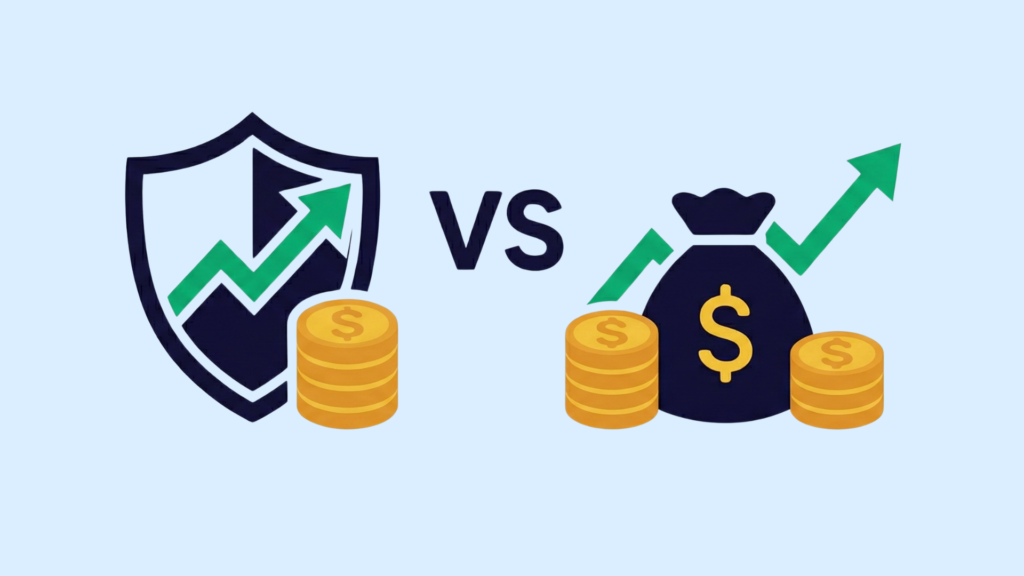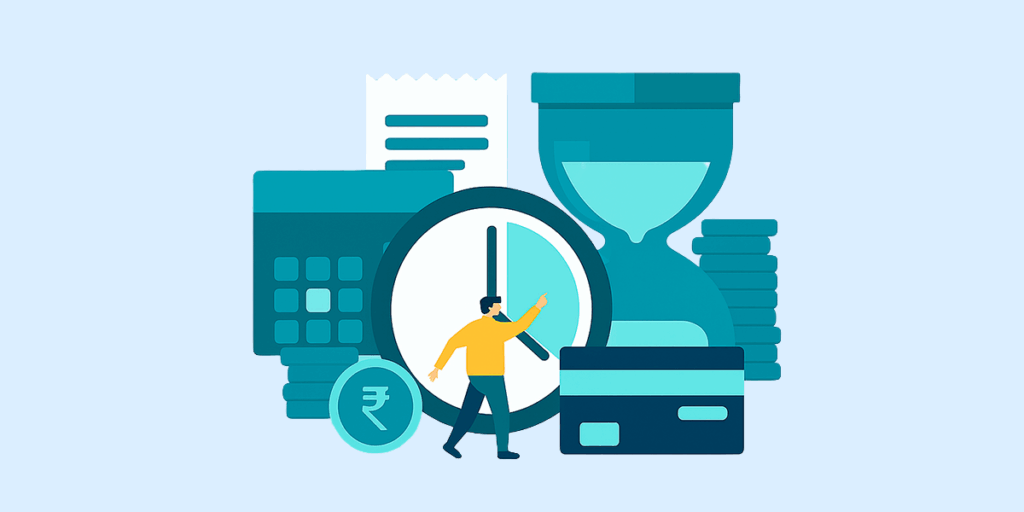An exit load is one of those small details in mutual fund investing that can quietly eat into your returns if you’re not careful. It’s a fee charged when you redeem your investment too early, a way for fund houses to reward patience and discourage quick exits.
In this blog, we’ll explain what exit load means, how it’s calculated, its impact on your returns, and how you can avoid paying it to make your investments more efficient.
Introduction to Exit Load in Mutual Funds
An exit load is a small fee charged by a mutual fund company when an investor redeems (withdraws) their units before a specified time period. It’s generally expressed as a percentage of the redemption amount.
Importance of Exit Load in Mutual Fund Investments
The exit load helps fund houses and investors in multiple ways:
- Discourages Short-Term Trading: Prevents investors from exiting quickly and impulsively after market fluctuations.
- Promotes Long-Term Commitment: Encourages disciplined investing and stable fund management.
- Protects Remaining Investors: Reduces the need for fund managers to sell securities prematurely to meet redemptions.
- Stabilises Fund Performance: Minimises the negative impact of large, early withdrawals on the overall fund value.
Exit Load for Mutual Funds Explained
The exit load for mutual funds varies by fund type and holding period. It ensures that investors who exit early bear the associated costs, not those who remain invested.
Why Mutual Funds Charge an Exit Load
Mutual fund houses charge exit load for practical and behavioural reasons:
- Discourages Frequent Trading: Keeps investors from entering and exiting funds too often.
- Maintains Portfolio Stability: Reduces the need for fund managers to sell holdings to meet withdrawals.
- Encourages Long-Term Investing: Helps investors stay invested through market cycles to realise better returns.
- Offsets Redemption Costs: Covers transaction costs that arise when investors exit prematurely.
How is Exit Load Calculated?
The basic formula for calculating exit load is:
Exit Load Amount = Redemption Amount × Exit Load Percentage
Net Redemption Value = Redemption Amount – Exit Load Amount
Where,
- Redemption Amount → The current market value of the units you withdraw
- Exit Load Percentage → The charge rate specified by the fund (e.g., 1% or 0.5%).
- Exit Load Amount → The actual fee deducted by the fund house.
Example of Exit Load Calculation
Let’s say you invested ₹1,00,000 in an equity mutual fund that charges a 1% exit load if redeemed within one year. After 8 months, your investment has grown to ₹1,10,000.
- If you redeem ₹1,00,000 after 8 months:
- Exit Load = ₹1,00,000 × 1% = ₹1,000
- Net Redemption Value = ₹1,00,000 – ₹1,000 = ₹99,000
Now, suppose a debt fund charges a 0.25% exit load for redemptions within 30 days.
- If you withdraw ₹2,00,000 after 15 days:
- Exit Load = ₹2,00,000 × 0.25% = ₹500
- Net Redemption Value = ₹1,99,500
H2: Exit Load Meaning in Simple Terms
In simple words, exit load is a small fee charged when you withdraw your mutual fund investment too early. Think of it as a way for fund houses to encourage investors to stay invested for a reasonable period and discourage short-term trading.
Key Takeaways on Exit Load
- Exit load applies only if you redeem before the fund’s specified holding period.
- Usually, it ranges from 0.25% to 1%, depending on the fund type.
- Can be avoided by holding your investment beyond the exit load period.
- Helps mutual funds maintain stability and protect long-term investors.
Exit Load vs Other Charges in Mutual Funds
Here’s how exit load compares with other fees and charges that mutual fund investors may encounter, like management fees or transaction fees.
| Charge Type | Purpose | When It’s Applied | Typical Range |
| Exit Load | Charged on early redemption to discourage short-term exits | On premature withdrawals | 0–1% of the redemption amount |
| Expense Ratio / Management Fee | Covers fund management and operational costs | Daily, deducted from NAV | 0.5–2.5% annually |
| Entry Load | (Rare today) Used to be charged during investment entry | At the time of purchase | Abolished by SEBI for most funds |
| Transaction Charges | Broker or platform fee for processing investment | Per transaction (optional) | ₹100–₹150 per investment |
Understanding the Impact of Exit Load
The exit load might seem like a small charge, but it can make a big difference to your final returns, especially for short-term investors. Here’s how exit load charges impact your returns:
- Reduces Redemption Value: When you redeem your mutual fund units before the minimum holding period, the exit load amount is subtracted from your redemption value. Even a 1% charge can cut into your profits if you withdraw frequently.
- More Impact on Short-Term Investors: For short-term investors, the exit load can significantly reduce returns since the investment period is too short to absorb the deduction. For example, if you invest ₹1,00,000 and withdraw in 6 months with a 1% exit load, you lose ₹1,000, which can be a large chunk of your short-term gains.
- Cumulative Effect on SIPs: In SIPs, each instalment is treated as a separate investment. Redeeming SIP units early means you might pay exit load multiple times, reducing your total returns.
Can Exit Load Be Avoided?
Yes, with a little planning, you can easily avoid paying exit load.
- Hold Investments for the Required Period: Most funds waive the exit load once you complete the minimum holding time (usually one year for equity funds).
- Choose Funds with No Exit Load: Opt for liquid, overnight, or certain index funds that have zero exit load if you need liquidity.
- Plan Redemptions Strategically: Track when your investments complete the exit load period—especially for SIPs—to redeem only matured units.
- Stick to Long-Term Goals: Align your investment horizon with your financial goals to avoid early exits and unnecessary charges.
Also, if you are new to investing in the stock market, Daily SIPs start at ₹11 per day and allow for your investment to build over time, which can be a hurdle with large upfront investments or expenses with exit loads. This will help you acquire your long-term targeted investment without stressing about an exit load!
Conclusion
The exit load in mutual funds is a small but important detail every investor should understand. By knowing how exit load affects your returns, and by planning redemptions smartly, you can avoid unnecessary costs and make the most of your investments.
Whether you’re a new or seasoned investor, understanding exit load helps you stay disciplined, strategic, and focused on long-term wealth creation.
Frequently Asked Questions (FAQs)
What is a good exit load for a mutual fund?
A good exit load is generally between 0% and 1%, depending on the fund type. Most equity mutual funds charge around 1% if you redeem units within a year, while many debt or liquid funds have no exit load at all. A lower exit load is preferable, especially if you plan short-term withdrawals.
How to avoid exit load in SIP?
To avoid exit load in SIPs, redeem units only after the exit load period ends, typically one year from the date of each instalment. Each SIP investment is treated as a separate purchase, so track individual instalment dates before redeeming.
Which mutual fund has no exit load?
Funds like liquid funds, overnight funds, and some ultra-short-term funds usually have no exit load. Certain equity index funds or ETFs may also offer zero exit load options. Always check the scheme information document (SID) before investing.
How to avoid paying exit load?
Some ways to avoid paying exit load are:
- Hold your investment beyond the minimum lock-in or exit load period.
- Plan redemptions strategically to avoid selling recent SIP units.
- Choose funds with a no-load or low-load structure if you expect frequent withdrawals.
Disclaimer
The information provided in this article is for educational and informational purposes only. It should not be considered as financial or investment advice. Investing in stocks and mutual funds involves risk, and it is important to conduct your research and consult with a qualified financial advisor before making any investment decisions. The author and publisher are not responsible for any financial losses or gains that may result from the use of this information.























